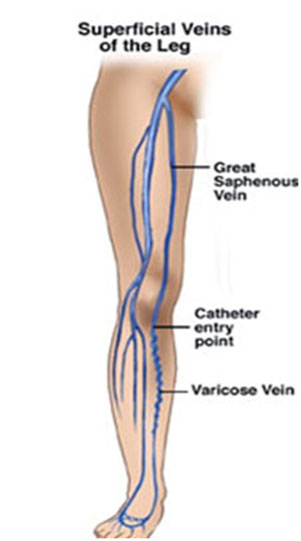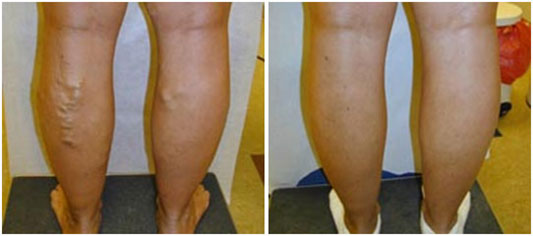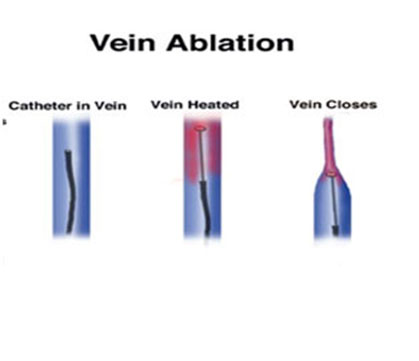Varicose veins are dilated, tortuous swollen veins usually seen in lower limbs. It is a very common condition resulting from decreased blood flow from the leg veins up to the heart, with pooling of blood in the veins


The best method to evaluate the disease is Doppler sonography which gives an idea of saphenofemoral and perforator incompetence.
Endovenous laser ablation of varicose veins represents a minimally Invasive procedure that is performed on an out-patient basis under local anesthesia and only takes about 30 - 45 minutes. In this procedure, the laser fiber is inserted into the affected vein through a small puncture site and the laser energy is then used to close the dilated vein.
